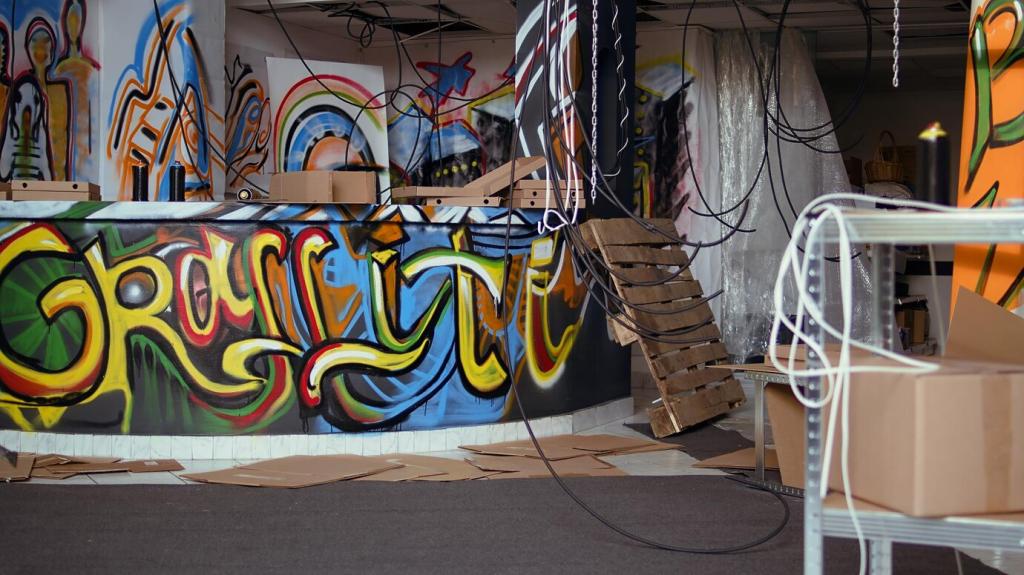Capturing Cityscapes: Urban Sketching Tips and Tricks
Urban sketching is an exhilarating way to capture the vibrancy and character of city life. Whether you’re exploring bustling markets, serene parks, or iconic skylines, this art form allows you to document personal experiences through expressive drawings. Here, you’ll find essential guidance on techniques, materials, inspiration, and developing your own style to bring cityscapes to life, no matter your experience level.
Building Strong Foundations: Observing Urban Environments
Understanding Composition and Perspective
Creating a dynamic and believable sketch relies heavily on understanding composition and perspective. Before you start drawing, pause to consider your vantage point and frame your subject for maximum visual interest. Notice how buildings, streets, and public spaces converge or diverge, and use leading lines to guide the viewer’s eye. Even simple adjustments—like tilting your viewpoint or crops—can vastly improve your sketch’s storytelling power. Mastering both one-point and two-point perspectives helps add depth, while keeping architecture from looking flat or awkward. Visualize the perspective lines converging on a vanishing point, and don’t be afraid to loosely plot these in your sketch so your buildings feel rooted in space rather than floating on the page.
Capturing Energy and Movement
Cityscapes are alive with movement—people, vehicles, and shifting light create a continuous flow that gives urban sketches their unique vitality. To capture this, resist the urge to draw everything in detail. Instead, use swift, gestural marks for crowds and buses or let your pen dance to suggest the blur of morning traffic. Focusing on a single, dynamic subject—a cyclist zipping by or a café conversation—can anchor your composition while conveying the city’s pulse. Allow your hand to respond intuitively, and don’t worry about perfection. Often, the raw, expressive lines best capture the restless energy of urban life.
Identifying Urban Details
Despite the city’s expansiveness, it’s the tiny details that often provide the most character: an ornate storefront, graffiti on a mailbox, mismatched streetlights, or a cluster of potted plants in a windowsill. Train your eye to seek out these visual treasures. Include just enough detail to suggest a story or mood without overwhelming your viewer or yourself. Selective focus—highlighting certain areas while hinting at others—makes your sketch more engaging and authentic. The city is never just about buildings; it’s about the history, people, and quirks that make each neighborhood unique.

Travel-Friendly Equipment Choices
Urban sketching demands portability. The best sketching kits are lightweight, compact, and easy to set up or stow away when moving between locations. Consider carrying a small sketchbook with sturdy paper that can handle both dry and wet media, along with a minimal set of drawing tools. Classic choices include fineliners, fountain pens, brush pens, and portable watercolor sets, but don’t overlook the merits of colored pencils or graphite for speed and subtlety. If you’re working outdoors, a folding stool or lap desk can turn almost any street corner into a makeshift studio. Develop a kit you can carry all day without fatigue—you’ll always be ready when inspiration strikes.

Speed Sketching Methods
City life moves fast, and so should your sketching when necessary. Practice capturing big shapes and essential details quickly before fine-tuning with more precise lines. Begin with loose, light sketches to block out key forms, followed by decisive outlines that emphasize your main subject. Developing the ability to work quickly prevents frustration when people or vehicles shift positions or when crowds become a blur. Wet media like watercolors can be applied with broad strokes to evoke light and atmosphere in seconds, while small dabs of color can highlight key areas. These techniques help you record your impression of the scene rather than striving for photographic accuracy.

Mixing Media for Impact
Combining different materials in a single sketch strengthens visual interest and encourages creative experimentation. Start with an ink sketch to establish bold structures, then add layers of watercolor wash to evoke light, weather, or mood. If you want to add texture, consider scraping colored pencil over dry paint or introducing subtle highlights with a white gel pen. Mixing media isn’t just an aesthetic choice; it also allows you to emphasize certain elements while simplifying others, letting your sketch breathe and speak. Use mixed media selectively to maintain coherence and draw viewers’ eyes to your intended focal points in the cityscape.
Finding Inspiration: Urban Exploration and Storytelling
Great sketches often come from unexpected places: an alleyway splashed with sunlight, the view from a rooftop, the bustle of a food market. Break free from the most familiar postcard spots, and instead wander off the beaten path to discover new angles and city scenes. Pay attention to how the changing time of day or weather transforms the urban landscape—morning shadows, neon reflections at night, or the hush of a rainy afternoon can all inspire distinct approaches to your work. By expanding your comfort zone and being open to chance encounters, you’ll fill your sketchbook with fresh visual stories beyond the ordinary.
Each city and neighborhood has its own mood, shaped by architecture, sounds, colors, and the rhythms of daily life. Try to convey this atmosphere in your sketches. Use sweeping lines for an energetic downtown, soft washes for a sleepy plaza, or sharp contrasts for the angular drama of skyscrapers at sunset. Think about what makes this place unique: Is it the interplay of old and new? The crowds pouring from a subway exit? The warmth of streetlamps on wet pavement? Capturing these intangible qualities turns your sketches from static representations into expressive snapshots of urban life, immersing the viewer in the scene.
Urban sketching goes beyond recording what’s in front of you; it’s a way to tell stories. Look for moments and scenes that hint at a narrative—a street musician encircled by listeners, families gathered at a park, or quiet corners peppered with past memories. Incorporating small details, gestures, and interactions can evoke emotions or spark curiosity in viewers. You can also add handwritten notes, dates, or snippets of overheard dialogue to personalize your sketches further. Over time, your sketchbook becomes a visual journal, chronicling both your journey and the layered stories of the city itself.
